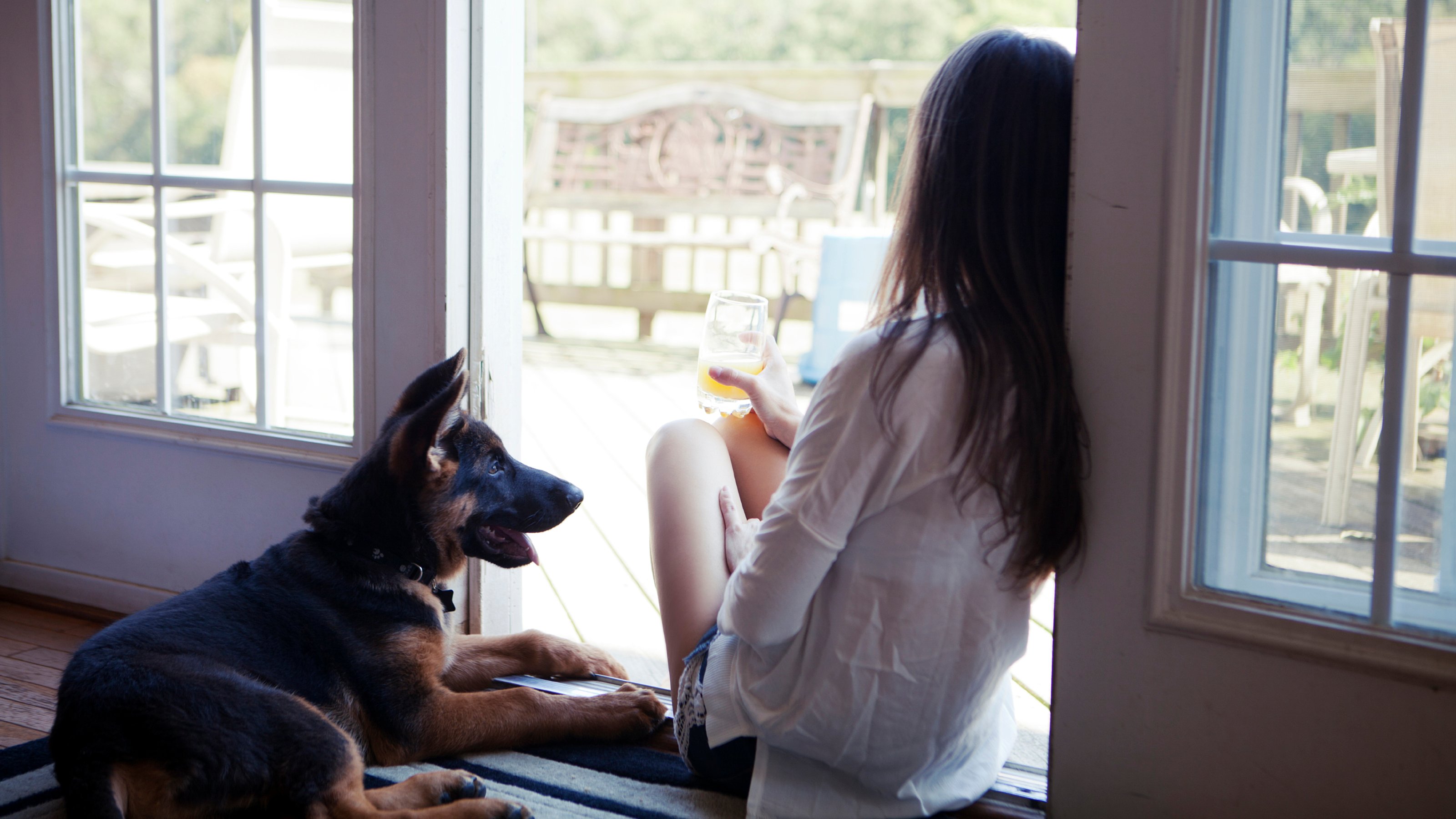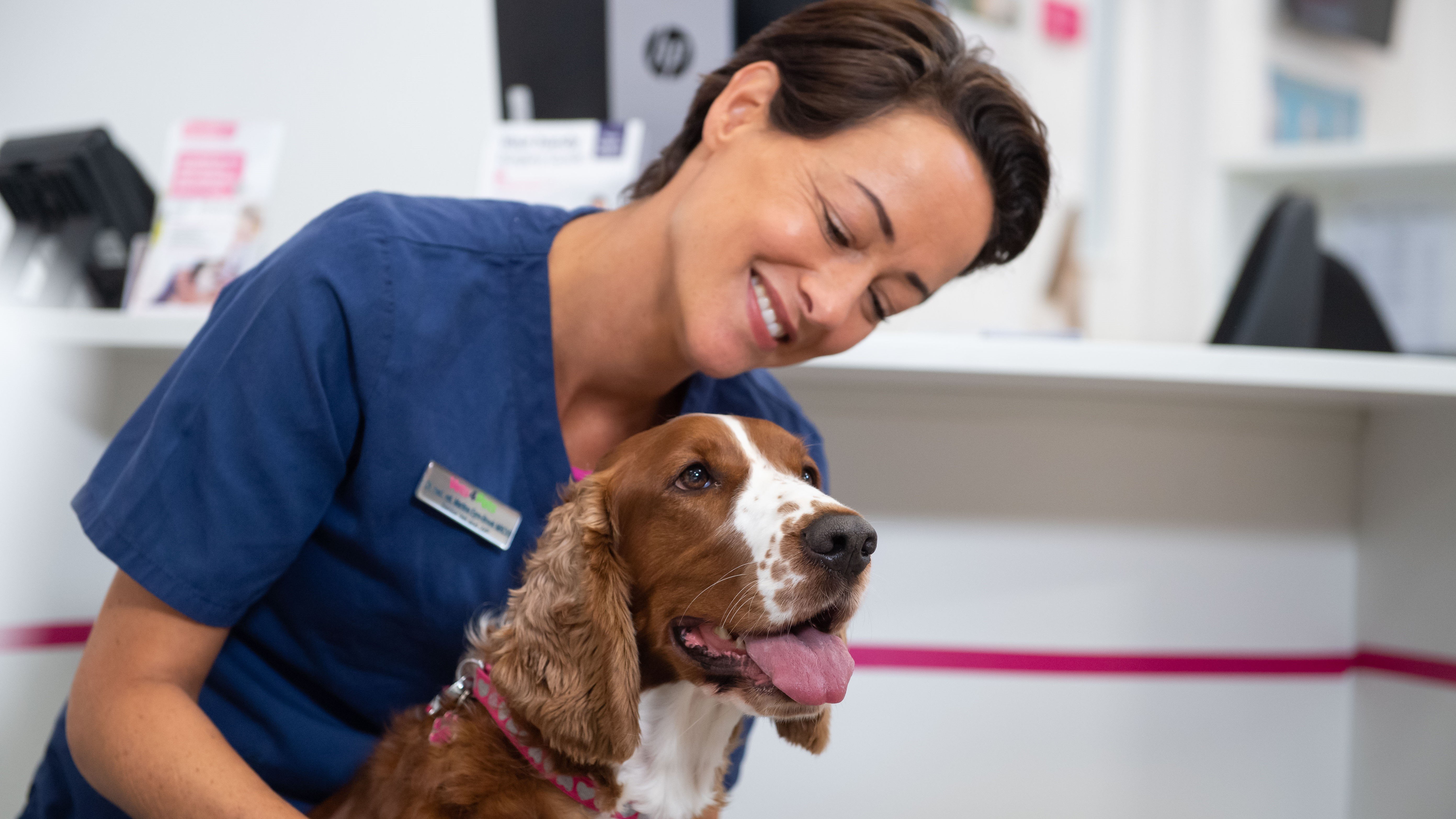
Moving House With Your Dog
Moving home is a stressful time for everyone, but it can be easy to forget how big an impact moving house can have on your dog.
Their life is based around routines and familiarity, and dogs also feed very much off your emotions. Disruption to you, and to both your routines, can be very difficult for your dog. Simple strategies can help make moving house with your dog easier and safer for you both, leaving you both free to enjoy your new home!
Before Moving...
Pheromones are the chemical signals animals use to send messages to each other. Dog appeasing pheromones (DAP) is the pheromone that female dogs make after they have puppies, which keeps the puppies feeling safe and secure. You can buy plug-in diffusers or dog collars that infused DAP into the air – the calming sensation has been shown to work on adult dogs too. Plugging in a diffuser or putting a pheromone collar on your dog should be done at least 24 hours before you start any changes at home, including packing.
Keep your routine the same while you pack. Your dog is used to a routine. They will know in general when walks, food and rest times are, and when they will spend time with you and when they will be alone. This gives your dog a sense of security and control in their home environment. Try to maintain as much normality as possible for your dog to help keep their stress levels down.
If your dog doesn’t travel well, speak to your vet in advance about how to manage this – the strategies will be different depending on if the problem is behavioural (fear of the car) or physical (motion sickness). In some cases, it may be both. Your vet can advise you on how to help your dog be more comfortable in the car, as well as prescribing anti-nausea medication if appropriate. If you are moving abroad, your vet will help you with any paperwork you will need – this should be done well in advance as this can be time consuming and for some countries will take months.
Just before you move, or as soon as possible after, you should register your dog with a local vet. With an unfamiliar environment, and lots of open doors and strangers, it is easy for your dog to get in an accident so making sure you know what to do if there is an emergency with your dog is important.
A new home and environment won’t immediately be relaxing to your dog. With lots of open doors as you move in boxes, and all the disruption of moving day, it can be easy for your dog to sneak out and go exploring. Making sure your dog’s microchip details are up-to-date with your new address, and that your other contact details are still correct, should be done a day or so before you move. A new tag for your dog’s collar should also be made with your new details on.
Although it is likely that you will clean your new house as you move anyway, if you have pets this should be done with them in mind. Scent is much more important to dogs than to humans and they are very sensitive to it. Making sure to clean at ‘dog height’ and wipe down areas that could have a doggy-scent on will leave the house clean for your own household smells. If you can get into the house to do this before you bring your dog that would be preferable. This will help your dog feel like your new home is also their new home faster and stop them from being wary of any scent ‘competition’.
Doing a sweep of the garden to check for holes in fences, other escape routes, or issues such as the presence of poisonous plants ahead of time will allow you time to remedy any issues. If you don’t have time, make sure your dog is only kept within safe and secure areas in the new house until these are fixed.
On Moving Day...
Consider leaving your dog with a friend or family member, on in kennels, during the move
This may not be possible, but if it is, leaving your dog with someone they feel comfortable with, or at a boarding kennels, while you pack and unpack will help keep them stress-free. Bringing your dog into your new home in the evening when everyone is more settled will help show your dog this new place is somewhere to relax – they will get their emotional cues from you, so this is a great way to teach them that this is a safe and calm place, with nothing to worry about. Don’t forget, if your dog is going into kennels they will need to be up-to-date with their vaccinations, and flea and worm treatments. Make sure to organise this ahead of time.
If you cannot put your dog with friends or family or in a boarding kennels, set up a room or area where they will be comfortable while you move out. This reduces the risk of accidents or loss, and gives them a safe space to relax. Pack your dog’s belongings last, so they don’t feel their possessions are being taken away from them.
Although this may be difficult, keeping your dog’s routine as similar as normal on moving day can be a great help. Try to at least feed your dog at their normal time, on their normal food. If you can manage a walk at their normal time as well, this will certainly help.
Overly fussing over your dog on moving day will make them feel like there is something to be worried about, however with all the changes going on they will need some reassurance. Try and act like it is a normal day, and keep as calm as possible. If you are very stressed, your dog will pick up on your emotional cues, and stress themselves.
Make sure to give anti-nausea medication in advance of travel to allow it time to work, and feed your dog as far in advance of travelling as possible. Travel with your dog as you would normally – they will need a car harness, and should never be free within the car environment, even if arranging this with boxes is difficult. Unrestrained dogs can be a hazard while driving, and hugely dangerous in a crash to themselves and others. Break up long journeys with plenty of stops for your dog to toilet and to have a drink and a leg stretch. Never leave your dog in the car, as both cars and vans can heat up rapidly, even in the shade.
Ideally unpack your dog’s bedding, food, water and toys first – if you can do this before bringing your dog inside for the first time then even better. It will be reassuring for your dog to see and smell their home items.
Scent is important to your dog and is a key part of the way they identify an area as safe or ‘theirs’. Making sure to bring in blankets and cushions that smell like home will really help your dog settle in. Rubbing a soft cloth around your dog’s face, and then onto furnishings and corners at dog-height, will help spread their scent around the house – this may feel odd, as we cannot experience the scent marking this achieves, but will be noticeable and calming to your dog.
When the house is secure, allow your dog to explore the new environment in their own time. Accompanying them on this tour can be reassuring – some dogs are less confident than others and will benefit from having you there. If securing the house is not possible, make sure to keep your dog on a lead – A house line can give freedom whilst allowing you peace of mind.
After Moving...
A new home is stressful, and even the best behaved dog may have a toilet accident as they get used to their new environment and routine. Be patient with your dog, don’t tell them off, and show them where you expect them to toilet going forward. Reward correct toileting, and if necessary re-visit your old toilet training tricks to get them back on track.
Although the drive to return to an old home is smaller in dogs than cats, it can occur, especially if you have not moved very far. Making sure to give the new owners of your old home your details will help, so if your dog does arrive there, they can contact you. Make sure to associate pleasurable experiences with your new home, such as grooming and meal times, and get your dog in a new routine quickly, to help them forget about their old house.
Health Plans to keep your dog healthy
At Vets4Pets we offer a range of Health Plans that make essential routine treatments more affordable. You'll save money on things like annual vaccinations, flea and worm treatment and routine health check-ups.

Dog Advice
Read more of our expert dog advice to keep your dog happy and healthy.
